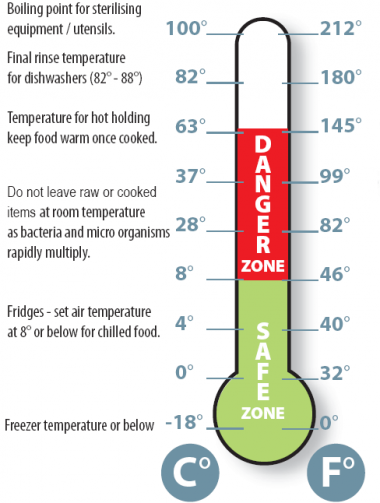

Most of these appliances come equipped with a dial that allows you to choose from different chill settings (like 1-5). These are great guidelines, but not terribly helpful if you don’t have a way to know what the actual temperature is inside your refrigerator or freezer. Now you know you should keep your fridge at 37 degrees and your freezer at 0 degrees to preserve food quality and inhibit bacterial growth.
#Freezer temperature how to#
How to Check Your Refrigerator’s Actual Temperature At less than 40 degrees, these bacteria can’t multiply and survive.

The best way to avoid the risk is to keep your fridge and freezer at the right temperature (and check it weekly).

#Freezer temperature full#
You could inadvertently eat and serve food that is full of foodborne illness-causing bacteria without realizing it. That’s what makes proper temperatures so important. This means any food items stored at the wrong temperature inside your fridge could still look, smell, and taste like it’s safe to eat. You can’t smell it, taste it, or see any evidence of it. Pathogenic bacteria that cause foodborne illness are different from spoilage bacteria. Some species double in number within 20 minutes while in the Danger Zone. At 70 degrees to 125 degrees, dangerous bacteria multiply even faster. These pathogenic bacteria thrive and multiply in the “Danger Zone” of 41 degrees to 135 degrees Fahrenheit.Ī refrigerator set at a temperature that is slightly too high can easily be in the Danger Zone. They cause nausea, vomiting, and diarrhea, which can start as little as 4 hours after eating contaminated foods. coli, Listeria, Norovirus, Salmonella, Campylobacter, and Clostridium perfringens are the main concern for keeping food stored at the right temperature. The Danger Zone: 41☏ to 135☏īacteria like E. At just a few degrees warmer or lower than the recommended temperature of 37-40 degrees Fahrenheit, dangerous bacteria that cause foodborne illnesses can multiply. One reason your fridge temperature is so important is food safety. It also ensures the food inside stays frozen without partially thawing. This keeps frozen food in the safe temperature zone where bacteria can’t grow. Recommended Freezer Temperatureįor your freezer, the temperature inside should be at 0 degrees Fahrenheit. This is cold enough to keep bacteria from growing but not so cold that the fridge’s contents will freeze. The “sweet spot” is around 37 degrees Fahrenheit. Don’t lower it too much, though – you don’t want food and liquids to freeze inside the refrigerator. The Food and Drug Administration (FDA) recommends setting your refrigerator temperature to 40 degrees Fahrenheit or lower. So what’s the recommended temperature setting for the refrigerator and freezer? Recommended Refrigerator Temperature Not to mention the risk of food poisoning increasing. If the temperature is off by even a few degrees, your food quality will suffer. Refrigerators make it possible to keep food fresh for longer periods when they’re set and working properly. What Should My Refrigerator Temperature Be? We’ll also talk about setting and understanding the temperature controls on your fridge and signs that your refrigerator thermostat needs to be adjusted. Keep reading to learn about the optimum temperature for refrigerators and food safety temperature recommendations. So how can you make sure your refrigerator temperature is safe? We’ve got some easy solutions for you. In terms of food safety and keeping items at the right temperature, even a 5-degree difference can be dangerous. The results? Most are off by at least a degree, and some by as much as 5 degrees. Consumer Reports tested the 12 top refrigerator brands to see how accurate their temperature controls were. The temperature controls included with refrigerators aren’t as accurate as you’d think. How cold is it inside your refrigerator and freezer? If yours is still on the factory setting, or if you’re relying on what the attached temperature controls say, it might be too warm or cold inside your fridge. The information included in this post is for informational purposes only and should not be taken as legal or financial advice.ĭoes Refrigerator Temperature Really Matter? We may earn a commission when you click our links. Don’t worry - we’ve made a complete guide to help you get it right.ĭisclaimer: REthority is supported by ads and participation in affiliate programs. Is your refrigerator temperature at the ideal setting? If you’re not sure, the safety and quality of your food may be at risk. Maintaining a Safe Refrigerator Temperature.How to Adjust the Temperature of Your Refrigerator.How to Check Your Refrigerator’s Actual Temperature.What Should My Refrigerator Temperature Be?.Does Refrigerator Temperature Really Matter?.


 0 kommentar(er)
0 kommentar(er)
